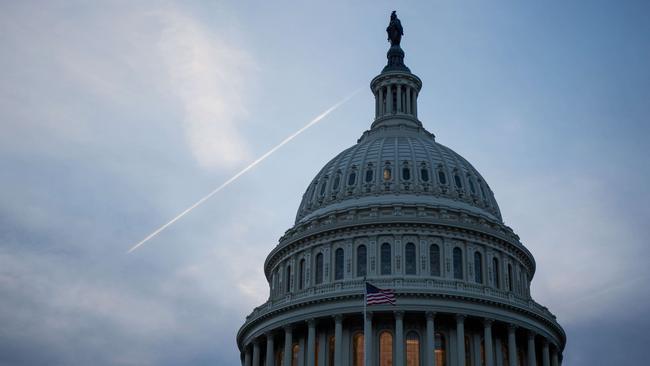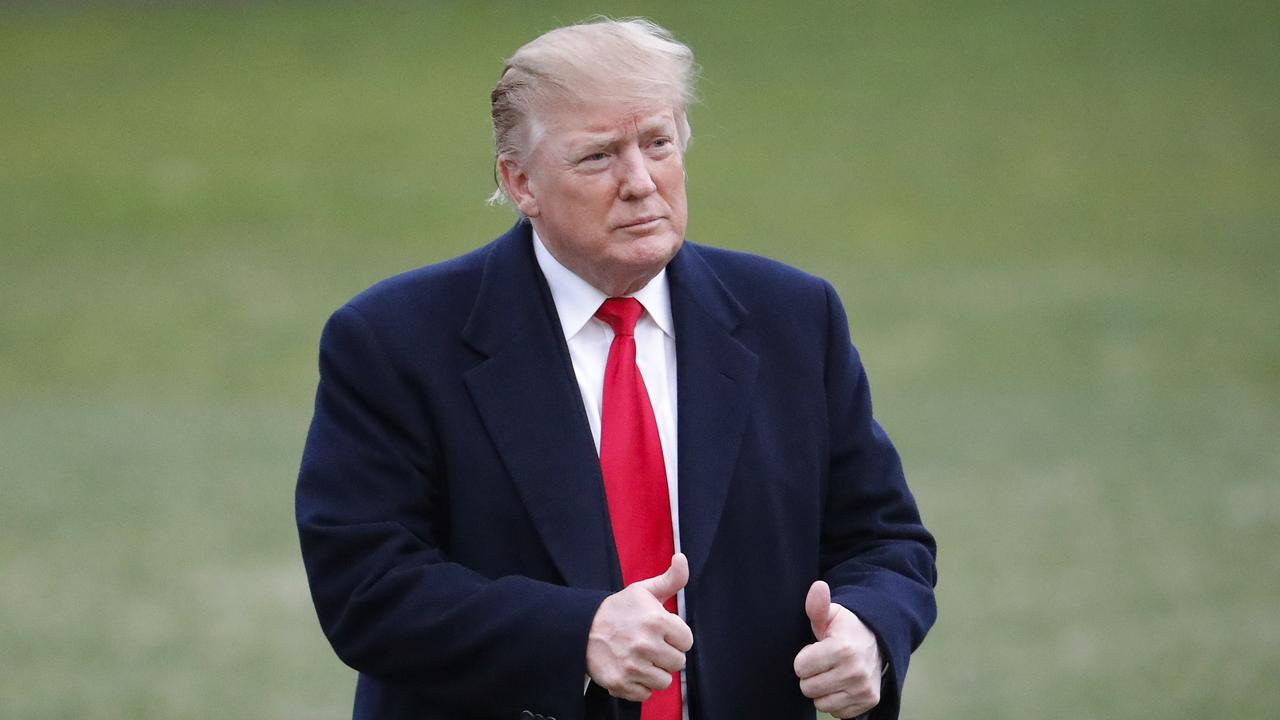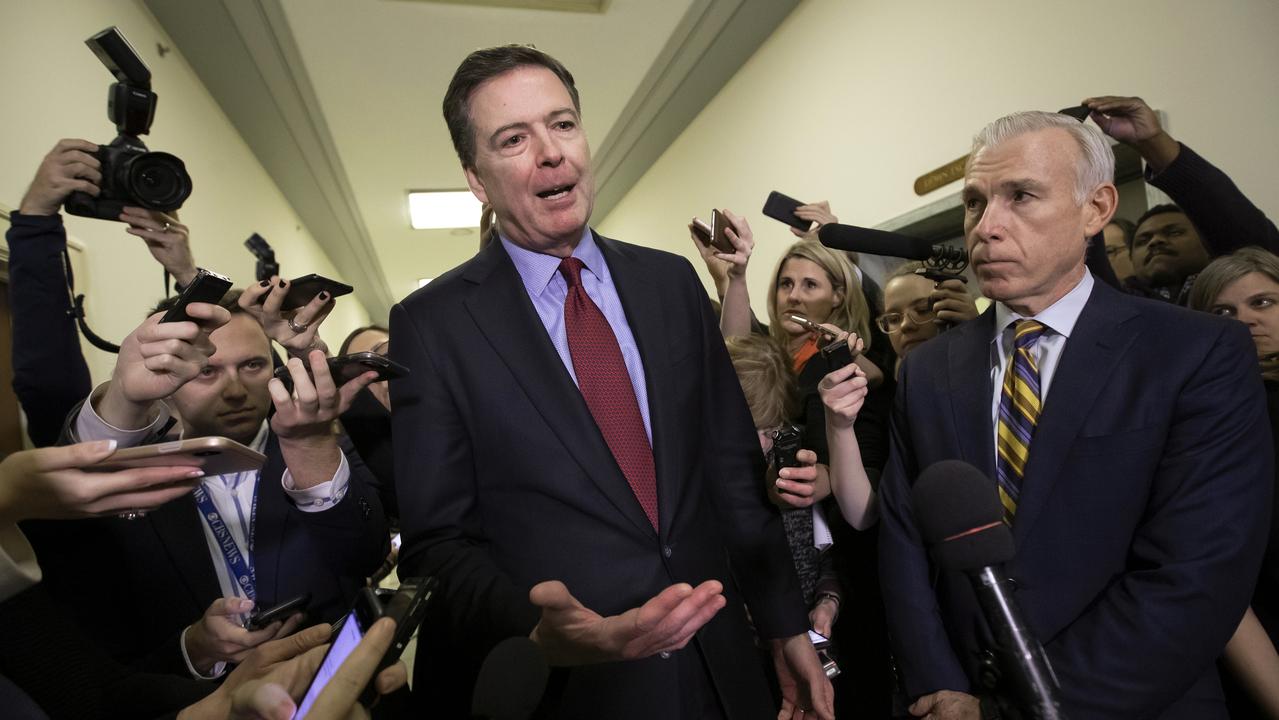US election: Donald Trump looking at draining the swamp
Erasing Obama and dealing with Washington are top of Trump’s agenda.

He says his priority will be to “drain the Washington swamp”. And on his first day in the Oval Office after his astounding victory, Donald Trump — the ultimate Washington outsider — adds that he will spend hours signing documents to comprehensively “erase the Obama presidency”.
So, amid the tumult and global uncertainty surrounding the 70-year-old New York real estate developer and casino operator’s success in winning the White House, what, realistically, will be in Trump’s in-tray after his inauguration on January 20?
It’s hard to be certain. As he showed throughout his campaign against Hillary Clinton, Trump is inconsistent. No sooner does he say something than he contradicts himself. But the broad parameters of his agenda are reasonably clear, if not assured, and there can be no doubt that as the hero of America’s working class voters who propelled himself into the world’s most powerful job, he will get to work on many of the core issues that won him the election.
ERASING OBAMA
Trump emphatically means what he says when he pledges to “drain the Washington swamp”. He believes that the institutionalised political and bureaucratic structures that dominate America are, in his terms, “corrupt” and must be dismantled. And he means it, too, when he says that on that very first day in office, after being sworn in on the steps of the Capitol, he will “spend hours” signing the documents that will “erase the Obama presidency”.
To do that, he could early on withdraw the US from such favourite Obama commitments as the Paris climate change agreement. He could also cancel all payments to the UN climate change program.
Another early target could be Obama’s commitment to bring thousands of refugees to the US, a prospect many Americans oppose. That fits with his promise on the stump to clamp down on anyone entering the US from countries that are hostile to America.
He could even cancel — as he said repeatedly that he would during the campaign — the nuclear deal with Iran concluded last year, another Obama favourite that Trump regards as contrary to US interests.
And he could order officials into immediate action to begin bringing trade cases against China, something that would have the potential to launch the often-mooted trade war with Beijing that many feared would be an early consequence of a Trump presidency.
SWAMP DRAINING
For all his bragging and boasting during the campaign, Trump may find it harder than he thinks to “drain the Washington swamp” and impose his will.
Presidents before him have found dealing with the Washington power structure hard, even when they were part of the political establishment. And the reality with Trump is that despite his win, he will arrive in Washington as part of a Republican Party that has been largely hostile to his candidacy and remains highly critical of him.
His victory will doubtless bring many of his opponents in the party into line. But achieving the political consensus that even he will need to govern will not be easy, given the extent to which he has made enemies of Republican leaders.
There are key issues in his in-tray, however, that could serve to establish the cohesion and support within the Republican Party that he requires.
SUPREME COURT
No issue to Republicans is more important than that of a replacement for the conservative judge, the late Antonin Scalia, on the Supreme Court. Republican legislators in congress have spent months blocking Obama’s nominee Merrick Garland, whom they see as not conservative enough.
The appointment was critical during the campaign. It goes to the heart of the balance between conservatives and liberals on the Supreme Court, which could play a key role in such major national issues as abortion and ensuring there is no challenge to the Second Amendment right to bear arms.
Trump has a list of seriously conservative candidates for the job. It is doubtless at the top of his in-tray for immediate action after January 20.
And it is unlikely that his appointments list will stop there. He has said he will give key posts in his administration to military men and prominent business executives as well as, possibly, to members of his own family.
A NEW GREAT WALL
Trump, in an interview with The New York Times before the election, made his priorities clear. His controversial “great big wall” to bar entry of illegal migrants from Mexico, he said, would be an immediate priority. Top aides have made it plain that he will not resile from what was one of his major election promises.
He regards it as key to establishing his credibility. Building it, he says, is not in doubt, with Mexico stumping up the cost despite the Mexican government’s total rejection of the wall and the view of most experts that forcing it to build something it does not want is implausible.
The wall, indeed, is likely to prove an early test for Trump and his relations with congress, for if Mexico is unwilling to stump up the cash to build it, he will have to go to congress for the money. It is by no means certain that they will be forthcoming for such a harebrained scheme.
REPEALING OBAMACARE
Along with other priorities in his first 100 days of banning entry into the US of people from countries where terrorism is rife and auditing the US Federal Reserve, Trump told The New York Times that most important would be to repeal the contentious Obamacare Affordable Care Act that has been at the centre of deep legislative conflict for so long.
Trump has said he will call a special session of congress to repeal the act. Most analysts believe he will face stiff opposition from Democrats but it looks likely that Republicans will be in control of both the House of Representatives and the Senate.
TAX CUTS
Trump makes much of his determination to cut taxes. He plans to collapse the seven income tax brackets, which peak at 39.6 per cent, into three tiers with a top rate of 33 per cent, slice corporate tax from 39 per cent to 15 per cent and eliminate estate taxes. Some lower income families would pay as little as 12 per cent. Analysts claim the plan would benefit the wealthy and while it proved a vote-getter, negotiating it through the Senate will be difficult.
ASIA PACIFIC & AUSTRALIA
As much as Trump is inexperienced in domestic politics, he is a neophyte — as he has repeatedly shown — when it comes to foreign policy. But that is unlikely to stop him pursuing the fixations he sought to articulate during the campaign — fixations that have alarmed many US allies.
The Obama administration conceived the 12-nation Trans Pacific Partnership trade deal as a vital element in its “pivot” to Asia. It was seen in our region as a crucial symbol epitomising the US determination to maintain its powerful influence in the Asia-Pacific region in the face of China’s aggressive expansionism in the South China Sea and elsewhere.
Just as he has denounced the North American Free Trade Agreement concluded when Bill Clinton was president, Trump ridicules the TPP as an abomination that will have no place in his foreign policy.
This is potentially damaging in terms of US prestige: Singaporean Prime Minister Lee Hsien Loong, for one, forcefully argues the need for Washington to continue with the TPP, saying many Asian nations regard it as a test of US commitment to our region, and warns that abandoning it will play into China’s strategic plans for expansionism.
Trump clearly has other ideas. Everything he says suggests he wants the US to retreat from the world stage, to withdraw inward and reject trade deals. His attacks on all such trade deals will doubtless place them high on his list of demolition priorities.
The president-elect wants to impose heavy tariffs on Chinese goods entering the US and is determined, in the same breath, to see countries like Japan and South Korea — in his eyes, wealthy trade giants — pay for the US troops that are deployed in their countries.
DESTROYING ISIS
One of the most intriguing of Trump’s policy initiatives relates to his stance on Islamic terrorism. He knows more than anyone else, he repeatedly insists, about how to defeat Islamic State. But beyond saying he would “bomb the shit” out of the jihadists’ oil resources, promising to be far more aggressive than anything the Obama administration was prepared to do, he has been unspecific about what he has in mind.
Crucially, in that context, he has spoken warmly of building a relationship with Russia’s President Putin, extolling what he believes would be the virtues of working closely with him to defeat Islamic State. He has vaguely suggested that the US could deploy as many as 30,000 troops to the Middle East but put this in the context of allowing Putin more room to take care of Islamic State.
DEALING WITH PUTIN
Unsaid in his embrace of the Russian despot is what he would do to counter what, under the Obama administration, has been the retreat from dominant longstanding US influence in the Middle East. Moscow’s displacement of the US would be solidified by any deal that effectively endorsed the strategic role Putin is playing there to rebuild Soviet influence.
Trump’s lack of foreign policy knowledge was graphically illustrated during the campaign when he showed he was unaware that Putin’s soldiers have been fighting in eastern Ukraine and that Moscow had illegally annexed Crimea.
That was matched with disparaging remarks about NATO, and his contention that NATO members should pay their own way and not rely on the US. He will doubtless now seek to mend bridges after seeking to go back on his previous denigration of NATO.
NUCLEAR PROLIFERATION
Trump has not recently reiterated his previous view that Japan and South Korea should be allowed to get their own nuclear weapons rather than rely on US military protection, but that is one issue on which he would surely find fierce opposition within Washington’s political and military establishment as it contemplates the consequences of further nuclear proliferation to add to the deepening problems over North Korea’s nuclear advances.
TRUMP’S INTENTIONS
There is no certainty about anything Trump may do. He achieved his incredible upset by convincing Americans disillusioned after eight years of Obama that their country is in dire straits and that only he can “make it great again”.
He appealed to their most base instincts over central issues such as immigration, America being “screwed” by the rest of the world, what he maintains are dodgy trade deals, the failure to get results in the war against jihadist terrorism and the fundamental need to “put America” first.
He offers simplistic, quick-fix solutions. But it may be that once in the White House and confronted by reality, Trump will find things more difficult.
“Erasing the Obama” presidency, for example, is all very well as an off the cuff ambition. But Trump will find that takes more than simply signing documents on his first day in the Oval Office. So, too, will his repeated promise on the stump to jail Hillary Clinton for what he maintains is her corruption and crimes. That is something no previous winner of the US presidency has threatened.
In his victory speech last night he went out of his way to praise Clinton and pointedly avoided repeating his jail threat.
The country Trump is president-elect of is deeply divided in a way that it has not experienced since the 1960s. Trump, in his zeal to impose his will, would be unwise to ignore divisions that threaten the fabric of American society.
Trump’s campaign promises are clear. His in-tray is now stacked with all the reforms he regards as vital and which swept him to power. But it remains to be seen how many of them he can possibly achieve.



To join the conversation, please log in. Don't have an account? Register
Join the conversation, you are commenting as Logout